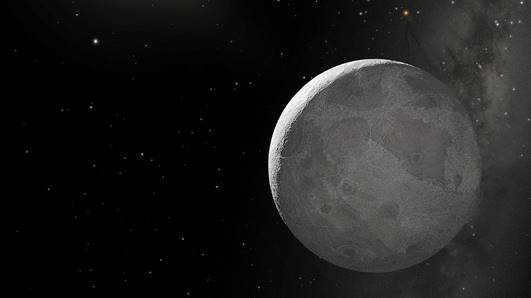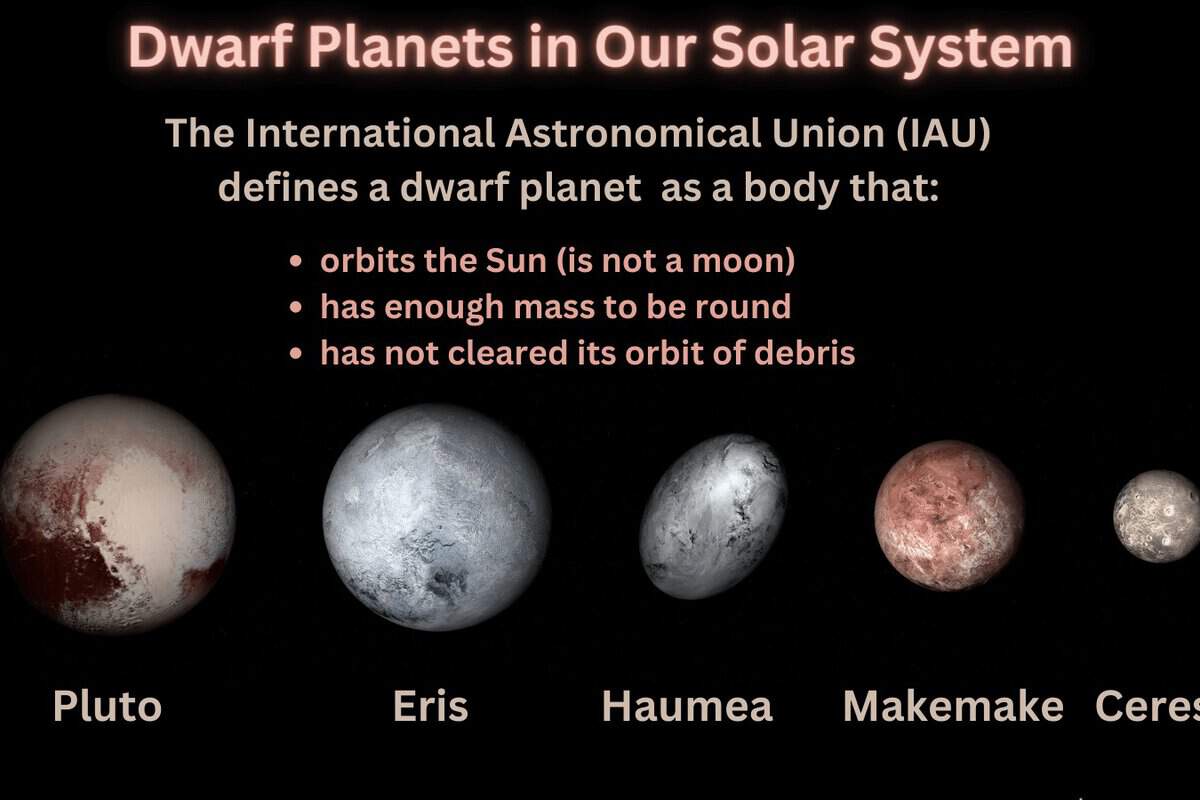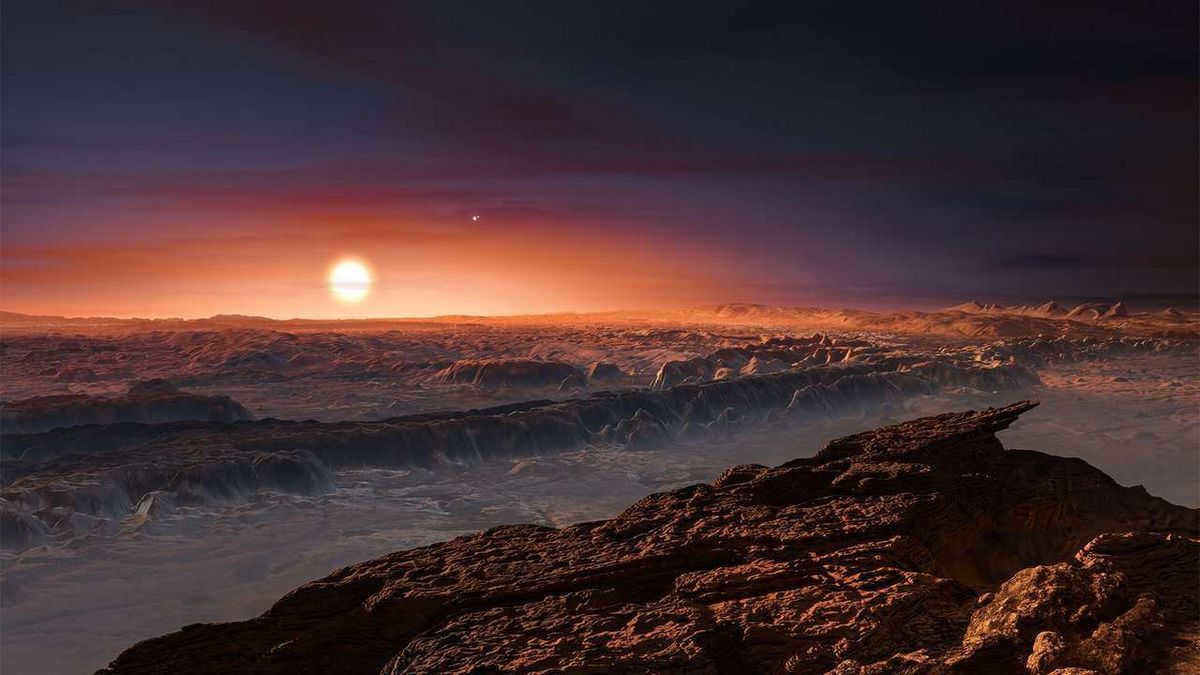
As an illustration, Pluto did not meet the criteria to be considered a planet according to the second point. It is classified as a dwarf planet.
What qualifies as a dwarf planet
Similar to regular planets, it orbits and revolves around the Sun. It also has a spherical shape. It does not necessarily have to be in the company of other planets to be designated as such.
However, there is a specific criterion that sets it apart from regular planets.
What sets planets and dwarf planets apart?
The path a planet takes is a key distinction between the two.
- Regular planets have a clear orbit, with ample space for movement. This is known as orbital dominance.
- Dwarf planets, on the other hand, have orbits that are not free of other objects.
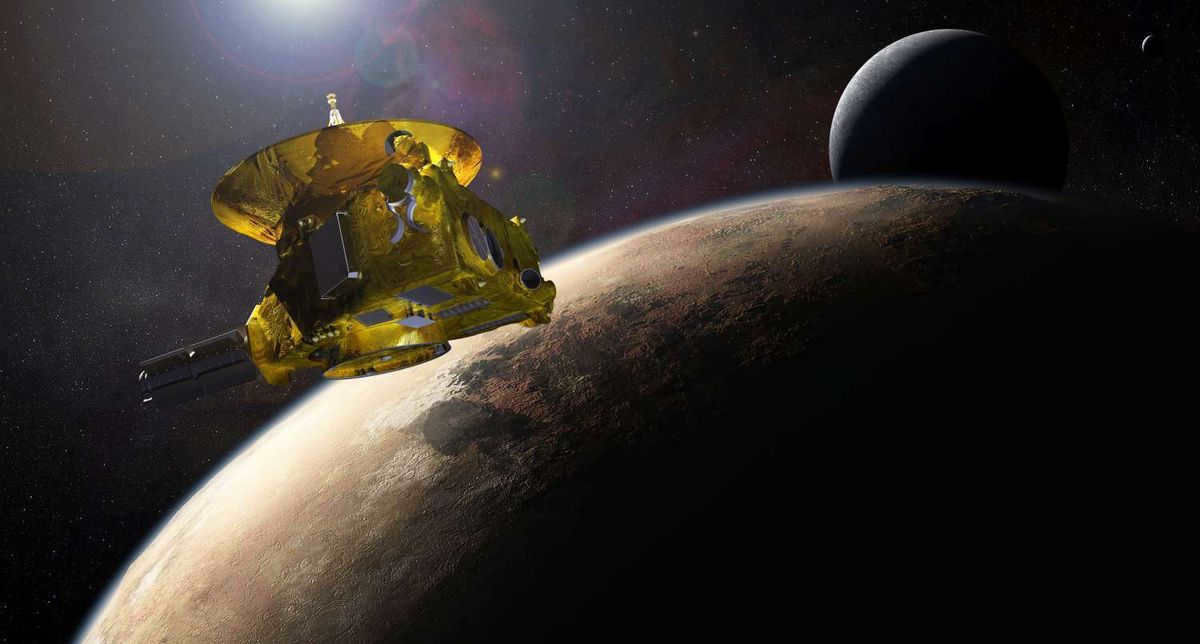
Pluto is classified as a dwarf planet due to the presence of a group of small objects in the Kuiper belt. One such object is the dwarf planet Erida, which was initially believed to be larger than Pluto.
– Pluto – was reclassified as a dwarf planet, although not all scientists agree with this decision.
– Erida – is located far from the Sun, and its approximate size was only determined in 2015.
– Makemake – also resides far from the Sun. It was previously believed to not have any satellites, but one was discovered in 2016.
– Haumea – has an egg-like shape and rotates rapidly around its axis.
– Ceres – was first discovered in 1801 and was initially thought to be a planet, then later classified as an asteroid.
The IAU includes these five objects on its list of dwarf planets. In the future, this list could potentially grow to include at least 14 more candidates. Scientists speculate that there may be a total of at least 200 dwarf planets in the solar system.
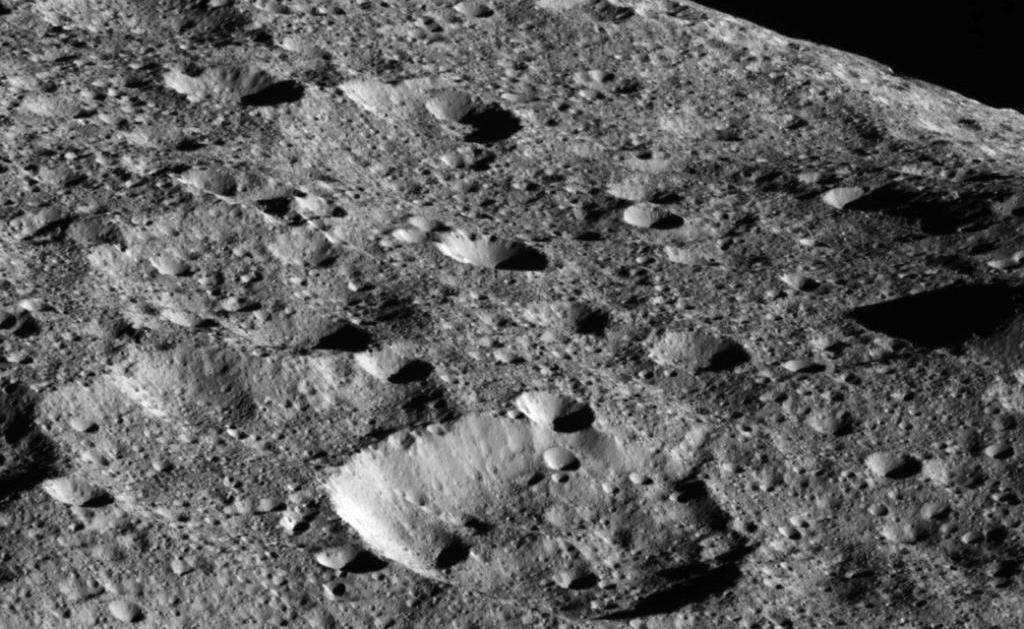
Additional Information on Dwarf Planets
- Dwarf planets typically consist of a combination of rock and ice.
- With the exception of Ceres, all dwarf planets within our Solar System are situated beyond the orbit of Neptune. Consequently, they complete an orbit around the Sun that can take hundreds or even thousands of years.
- Ceres, located closest to Earth, experiences a day that lasts for nine Earth hours, while its year is equivalent to 4.5 Earth years.
- Relatively speaking, Ceres is the warmest dwarf planet, with a maximum surface temperature of minus 34 degrees Celsius. Other dwarf planets are simply farther away from the Sun.
- Haumea boasts a day length of just under four Earth hours.
- Observing dwarf planets from Earth can only be accomplished through the use of a telescope, such as Makemake.
Today we will discuss the dwarf planets found within our solar system, their characteristics, and the specific objects included in this category.
As we are aware, celestial bodies in the universe are classified into two types: inner and outer planets. These are commonly known as earth-like bodies and the group of giant planets. However, there exist other entities within our solar system.
The International Astronomical Union, which is the global astronomical organization, has established the definition for these entities.
Thus, dwarf planets are celestial bodies that orbit the Sun and possess sufficient mass to maintain a spherical shape due to gravitational forces. Additionally, they cannot be satellites and cannot dominate their own orbital region.
The IAU has officially recognized the following objects as dwarf planets:
Furthermore, researchers acknowledge that there may be as many as 40 celestial bodies in the solar system that fall into this particular category.
It is worth noting that Pluto is the sole object that has been demoted to the status of a dwarf planet.
Characteristics of dwarf planets
According to scientists, dwarf planets have different chemical compositions, but they all possess icy surfaces. However, only Ceres has been extensively studied in terms of its structure, as the others are located at significant distances, which has posed challenges for precise analysis.
It should be emphasized that there are no strict criteria for determining their size and mass when classifying these objects. For instance, objects that are larger and more massive than Mercury are not categorized as dwarf planets unless they have cleared the vicinity of their orbit from other celestial bodies.
Indeed, the hydrostatic equilibrium form, which is the balance of gravitational forces and pressure forces of the medium acting in the opposite direction due to the pressure gradient caused by gravity, sets the minimum boundary. Nevertheless, this definition expands the number of possible dwarf objects.
Indeed, this is an incredibly intricate and still not fully explored issue. Given that the expanse of our system remains largely uncharted, the scope of this category is continuously expanding.
Primarily, an extensive aggregation of planetary dwarfs and their potential counterparts within the Kuiper belt has been identified. Scientists estimate that approximately 260 entities could reside within this region, with an additional 10 thousand potentially existing beyond its boundaries.
Furthermore, over 100 transneptunian objects have been recently detected, some of which may qualify as dwarfs.
In addition, there are approximately 100 bodies recognized by scientists as potential dwarf planets. However, official confirmation necessitates thorough examination. This is merely the beginning, as there is still much to discover.
By the way, there exist other celestial bodies in our cosmos. For instance, astronomers have recognized small celestial objects that are distinct from dwarf planets.
Small planets are also celestial bodies that orbit around the sun. However, they cannot be categorized as either planets or comets. Previously, they were referred to as asteroids before they were grouped separately.
At present, we are aware of the names of the dwarf planets and have managed to approach them to some extent. Undoubtedly, they bear some similarities to full-fledged planets, which renders them highly captivating and extraordinary to us.
We can assert that the discovery and exploration of dwarf planets are still in their infancy. Scientists are bound to uncover ways to acquire more knowledge about them beyond the current understanding.
It’s challenging to investigate dwarf planets due to their substantial distance from the Sun. Moreover, their orbits are crowded with other celestial bodies, further complicating research. Perhaps that’s why the majority of them were only identified in the 21st century, when advanced optical systems became available. Thanks to these cutting-edge technologies, we can now delve deeper into the exploration and understanding of the cosmos.

The Solar System is comprised of a central star, the Sun, and a collection of planets that orbit around it. These planets are cosmic bodies with a significant mass and a spherical shape. In total, there are eight main planets that each have their own satellites. Additionally, there are other planets within the Solar System that possess unique characteristics.
There exist celestial objects known as dwarf planets. These objects possess the following characteristics:
- They have an orbit around the Sun.
- They have a mass that gives them a spherical shape.
- They are not satellites of other planets.
- They are unable to clear their orbit of other space objects.
Currently, there are officially recognized five dwarf planets. They are listed below:
Aside from asteroids, four other planets fall into the category of transneptunian objects. There have been reports suggesting that around 40 additional space objects belong to this group. The exact number of dwarf planets in the Solar System is currently unknown. Scientists believe that their number could be quite large.
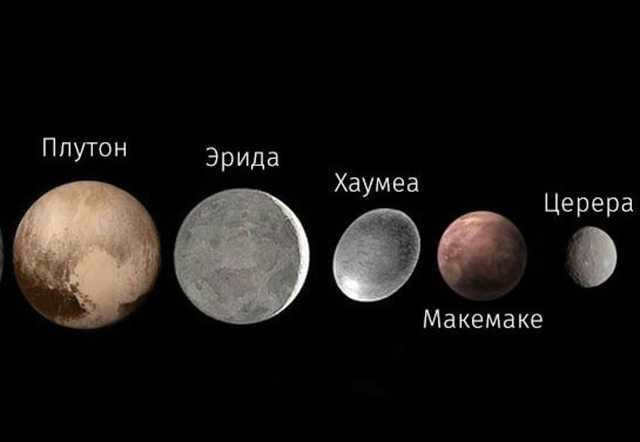
Sedna, a celestial object, is currently being considered as a potential dwarf planet. Although it has not been officially designated as such, scientists classify Sedna within this category.
From Earth’s surface, astronomers study dwarf planets using near-Earth telescopes. The exploration of outer space continues to expand the list of dwarf planets that may be identified in the future.
Distinctive Features of Dwarf Planets
The locations of dwarf planets vary significantly. For example, Ceres is situated within the asteroid belt, an area positioned between Mars, a member of the terrestrial planets, and the colossal Jupiter. This region contains numerous asteroids, some of which are occasionally classified as dwarf planets.
The Kuiper belt, which is located beyond Neptune’s orbit, is home to several celestial bodies including Pluto, Haumea, and Makemake.
Erida is part of the Scattered Disk region, which is situated in the outermost regions of space, far away from the Sun.
Pluto is the largest of the dwarf planets, slightly bigger than Eridus. When arranged in order of size from largest to smallest, the list is as follows:
Ceres has a spherical shape and consists of a rocky core covered by an icy mantle. It has a thickness ranging from 60 to 120 kilometers.
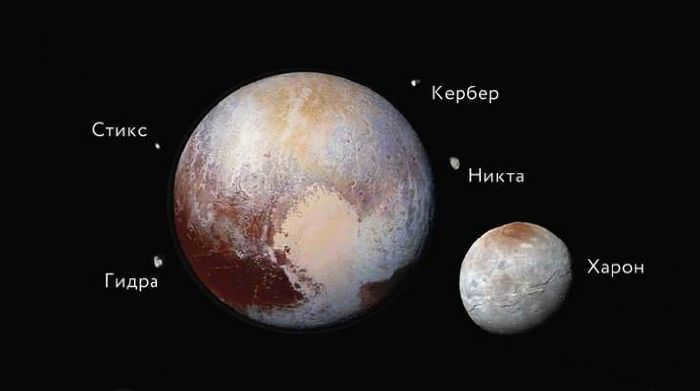
Figure 3. Pluto and its moons.
The size, mass, and various other properties of Makemake are still unknown. Its surface is composed of frozen gases, and the temperature on the surface is approximately -240 ºC.
Haumea’s surface is covered in water ice. This dwarf planet rotates very rapidly on its axis.
Aside from Ceres, other dwarf planets also have moons.
What did we learn?
The solar system remains largely unexplored, with the existence of dwarf planets being a significant discovery. While there are currently only 5 officially recognized celestial bodies, the definition of planets suggests that there could potentially be many more. However, the exact number remains uncertain.
The term “dwarf planet” was officially established in 2006, following the identification of Pluto-sized and larger bodies beyond the orbit of Neptune. Since then, numerous bodies in the solar system have been classified as dwarf planets.
This concept has sparked considerable debate, particularly regarding the status and nature of Pluto. Currently, the International Astronomical Union (IAU) acknowledges the existence of 5 dwarf planets, with approximately two hundred awaiting confirmation. Let’s explore the characteristics that define a dwarf planet.
Dwarf planets: their definition and characteristics
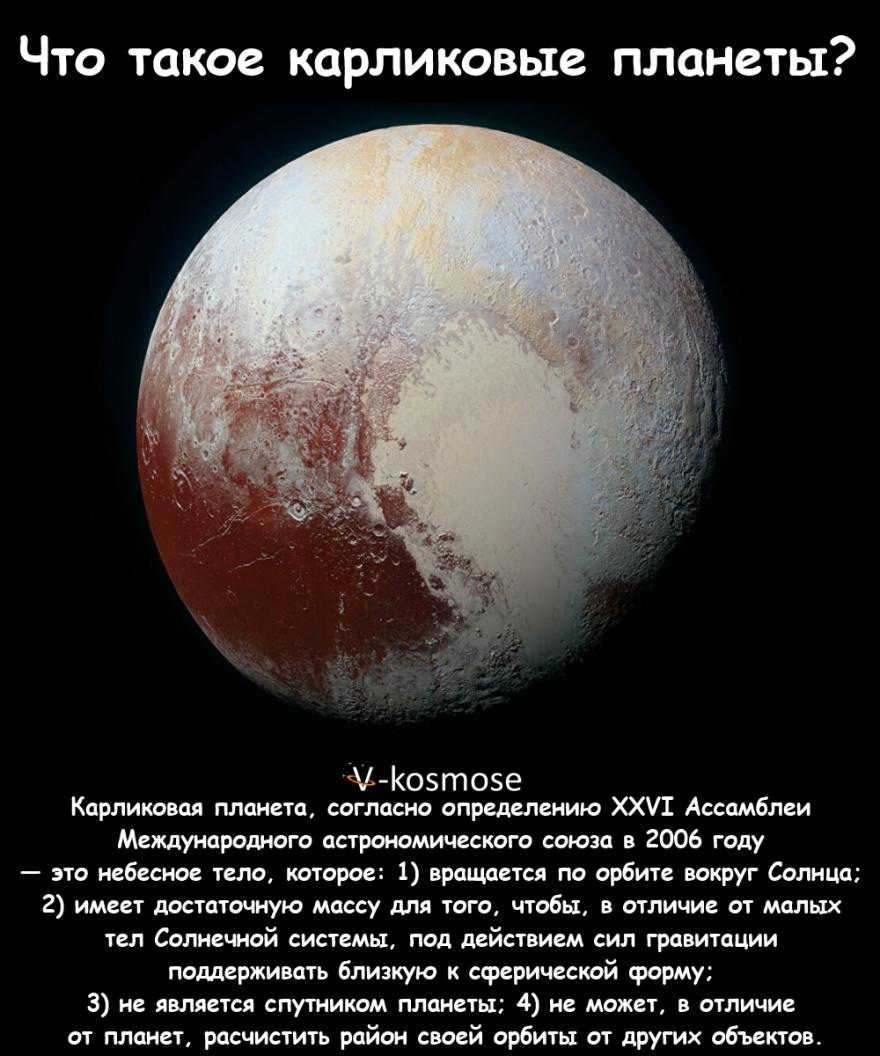
A dwarf planet is an astronomical body that:
- orbits the Sun;
- has sufficient mass to assume a nearly circular shape;
- is incapable of clearing its orbit of other debris.
In essence, any celestial object with the mass of a planet, but not large or dominant enough to be considered a full-fledged planet or moon, is classified as a dwarf planet. However, it must orbit the Sun and possess a spherical shape. Below is a compilation of dwarf planets along with their distinguishing characteristics, detailed descriptions, and accompanying photographs.
Pluto
Ceres
Makemake
Erida
Haumea
Potential dwarf planets:
Size and mass of dwarf planets
In order for a celestial body to assume a spherical shape, it must possess enough mass to withstand its own gravitational force. As a result, the internal pressure causes the outer layer to become malleable, filling in any elevations or depressions. This is not the case with asteroids.
For celestial bodies with a diameter of a few kilometers, gravity is the dominant force, causing them to elongate and take on a shape similar to a potato. As the object grows larger, the level of internal pressure increases until it reaches a state of equilibrium. Take a look at the table of key characteristics of dwarf planets, which includes information about their orbits.
Key features of dwarf planets
| 1 | 134340 | 136108 | 136472 | 136199 |
| Asteroid Belt | Kuiper Belt | Scattered disk | ||
| 975,7909 | 2306.20 | 1960.71518 996 | 1500.1420 | 2326.12 |
| 9.5×10^20 0.00016 | 1.305×10^22 0.0022 | 4.2×10^21 0.0007 | ? | ~1.67×10^22 0.0028 |
| 0.0738 471 | 0.180 1148.07 | ~750 | ? | 0.19 ~1300 |
| 0.0032 | 0.053 | 0.013 | 0.068 | |
| 2.08 | 2.0 | 2.6–3.3 | > 1.4 | 2.5 |
| 0.27 | 0.60 | 0.44 | ? | ≈ 0.8 |
| 0.51 | 1.2 | 0.84 | ? | 1.3 |
| 0.3781 | -6.38718 (retrograde) | 0.16 | 0.32 | ≈ 1 (0.75–1.4) |
| 2.5—2.9 | 29.66—49.30 | 43.13 | 45.79 | 67.67 |
| 4.599 | 248.09 | 283.28 | 309.9 | 557 |
| 17.882 | 4.666 | ? | 4.419 | 3.437 |
| 0.080 | 0.24880766 | 0.195 | 0.159 | 0.44177 |
| 10.587° | 17.14175° | 28.22° | 28.96° | 44.187° |
| 4° | 119.61° | ? | ||
| 167 K | 44 K | 32±3 K | ≈ 30 K | ≈ 42 K |
| 0 | 5 | 2 | 0 | 1 |
| 01.01.1801 | 18.02.1930 | 28.12.2004 | 31.03.2005 | 5.01.2005 |
However, the presence of small celestial bodies in the solar system can also be influenced by the rotation of their axes. In the absence of rotation, these bodies would take on a spherical shape. The faster the rotation, the more pronounced the flattening effect becomes. In some cases, this can result in extreme elongation, as observed in Haumea, which is twice as long along its major axis. Additionally, tidal forces can cause objects to become tidally locked, meaning that they always show the same side to their gravitational partner, as seen in the conjunction of Pluto and Charon.
The International Astronomical Union (IAU) has not established specific upper and lower mass limits for dwarf planets. However, the lower limit can be determined by the need to achieve hydrostatic balance. The size and mass of these celestial bodies are determined by their composition and thermal history.
As an illustration, silicate asteroids attain equilibrium when they reach a diameter of 600 km and a mass of – 3.4 x 10 20 kg. If the entity contains lower amounts of solidified water, the threshold would be 320 km and 10 19 kg. It appears that there is no universally accepted criterion for determining the size or mass. Therefore, the determining factor at present is the shape.
Prevalence of dwarf planets in orbit
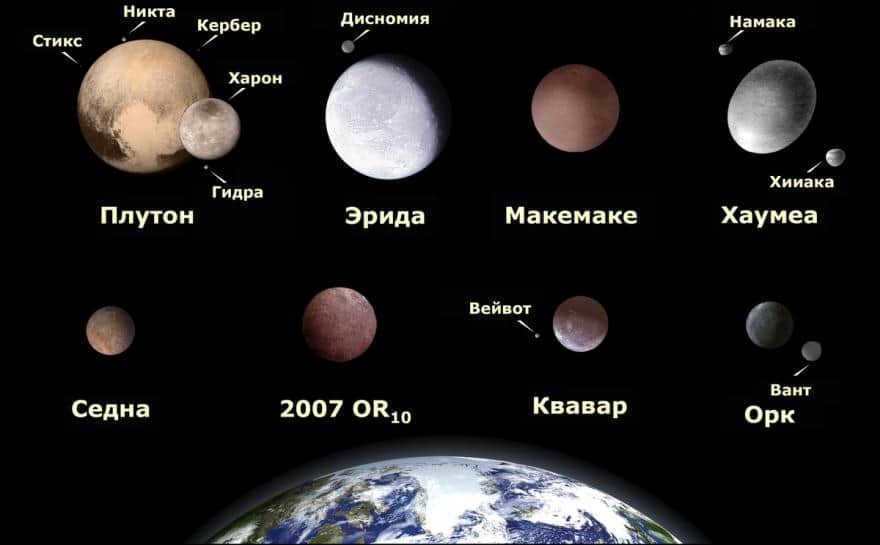
A considerable number of scientists have advocated for the inclusion of the ability to clear the space around them in the definition of hydrostatic balance. Essentially, this refers to a planet’s capability to attract or repel smaller objects in its vicinity. However, dwarf planets lack the necessary mass to achieve this.
To address this issue, Alan Stern and Harold Levison introduced a parameter called lambda. It is commonly used by scientists like Stephen Soter to differentiate between dwarf planets and regular planets. Additionally, Soter proposed another parameter known as the planetary discriminant (μ). This parameter is determined by dividing the mass of a celestial body by the mass of other objects that share its orbit.
Dwarf planets and potential candidates
The roster of dwarf planets within our solar system consists of Pluto, Makemake, Erida, Haumea, and Ceres. It is worth noting that only Pluto and Ceres are universally accepted as dwarf planets without any dispute. According to the International Astronomical Union (IAU), trans-Neptunian objects (TNOs) must possess a diameter of at least 838 km in order to be classified as dwarf planets. The accompanying visual representation provides a comparative analysis of the sizes of these celestial bodies.
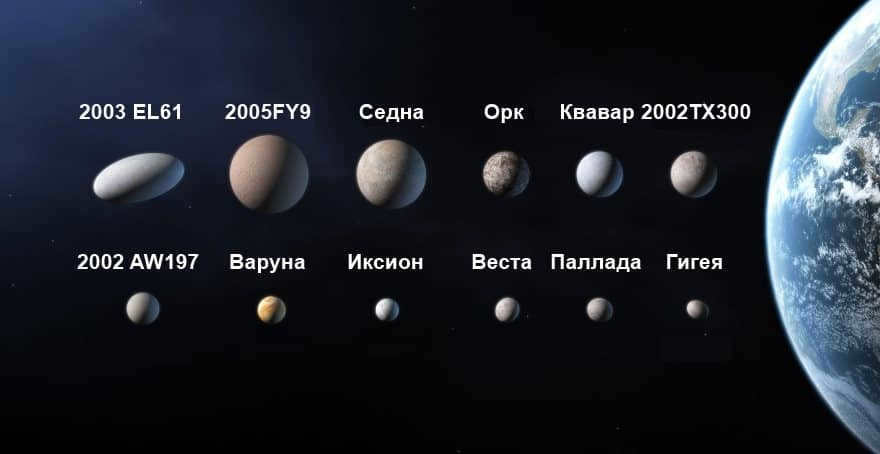
A comparative analysis of the sizes of potential dwarf planets is presented in the image above.
Among the candidates for dwarf planet status are Ork, 2002 MS4, Actaea, Kvavar, 2007 OR10, and Sedna. These celestial bodies are located in either the Kuiper Belt or the Scattered Disk. Sedna stands out from the rest and is considered to be in a separate category. It is estimated that there may be an additional 40 known objects that should be reclassified as dwarf planets. Moreover, there are still over two hundred objects in the Kuiper Belt, and the total number may exceed 1000.
The controversy surrounding the classification of dwarf planets
When the International Astronomical Union (IAU) adopted new criteria for defining planets, it sparked a heated debate among scientists. Mike Brown, the discoverer of Eris, supported the new rules, which resulted in the official number of planets being reduced to eight. However, Alan Stern voiced serious concerns about these criteria.
Stern argued that other celestial bodies, such as Mars, Jupiter, Neptune, and even Earth, have not completely cleared their orbits of debris. For instance, Earth has approximately 10,000 near-Earth asteroids in its vicinity, while Jupiter has around 100,000 Trojans. Stern staunchly believed that Pluto should still be considered a planet, along with Ceres and Eris as additional planets.
Categorizing exoplanets poses its own challenges. Since we can only observe their characteristics indirectly, it becomes difficult to determine if their orbits have been cleared. As a result, scientists have introduced criteria based on minimum mass and size.
There is also a dispute surrounding the decision-making process. It should be noted that the voting results are based on a small fraction (less than 5%) of the total participants. The meeting itself took place on the final day of the 10-day event, after many attendees had already departed. Nevertheless, proponents assert that the outcome is statistically significant.
Many individuals argue that they were unable to participate in the vote in Prague, and therefore view the process as invalid. Consequently, the International Astronomical Union (IAU) has stated that it will investigate the issue and establish clearer criteria for classifying planets. However, for the time being, the status quo remains unchanged. As we venture further into space, the challenges of discernment only become more formidable.

Definition of celestial dwarf planets
In 2006, astronomers established a classification system for celestial bodies orbiting the Sun, dividing them into three categories:
Celestial bodies classified as dwarf planets occupy a unique position. They do not possess the large size or orbit of planets like Mars or Jupiter, nor do they fall into the category of asteroids.
The International Astronomical Union defines dwarf planets as spherical celestial bodies that revolve around the Sun. These bodies have a small mass and lack gravitational dominance, instead holding smaller celestial objects in their orbit.
Dwarf Planet Size and Mass
The spectrum of objects in this category consists of 5 dwarf planets: Haumea, Makemake, Erida, Ceres, and Pluto (formerly classified as a planet). However, scientists propose the existence of numerous others. There exists a group of potential candidates, including Sedna, for instance.
According to MAC experts, a dwarf celestial body should possess dimensions of at least 800 km in diameter and a mass exceeding 5⋅10 20 kg. The parameters for each object are listed in the table below:
| No. n/a | Name of dwarf planet | Dimensions (km) | Mass in kg | % of Earth mass |
| 1. | Ceres | 975,7909 | 9.5*10^20 | 0.0016 |
| 2. | Pluto | 2306,2326 | 1.305*10^22 | 0.22 |
| 3. | Haumea | 1960,1518,996 | 4.2*10^21 | 0.007 |
| 4. | Makemake | 1360×1480 km | 3*10^21 | 0.05 |
| 5. | Erida | 2326,2338 | 1.67*10^22 | 0.28 |
The approximate mass of Makemake is determined because it lacks satellites. Scientists speculate that Makemake has a weight of about 3⋅10 21 kg, which is equivalent to 0.05% of Earth’s mass.
The Origin of Dwarf Planets
Most of the dwarf planets in the solar system can be found in the Kuiper belt. The formation of these dwarf planets is attributed to the dynamic movement and compression of volatile substances such as ammonia, methane, and water. They could also contain various types of rocks.
Outside the Kuiper belt, it is believed that the building materials for dwarf planets come from the Oort cloud. Through the process of compaction, these celestial bodies take on a spherical shape and acquire other characteristics similar to their older counterparts.
Dwarf planets
Each of the dwarf planets in the Solar System possesses its own unique characteristics. They are individually identified by their respective numbers assigned by the CMB (Minor Planet Center), their specific locations within the Solar System, the number of satellites they have, and other distinguishing features.
Pluto
According to the recent definition by the MAC, a planet is an astronomical object that orbits the Sun in a nearly circular shape. In addition, its gravitational field must be sufficiently strong to clear its orbital path of any other celestial bodies, with the exception of satellites.
Dwarf planets, on the other hand, have a spherical shape and orbit the Sun, but they do not have the ability to dominate their orbit by clearing it of other objects. They are too small and lack the necessary gravitational force to do so. Furthermore, unlike satellites, dwarf planets revolve around the Sun rather than orbiting other planets.
In 2006, the International Astronomical Union (MAC) made a decision to revise the categorization of celestial bodies that revolve around the Sun. As a result, Pluto was excluded from the roster of planets due to its relatively small mass and inability to clear its orbit. Consequently, Pluto is now classified as a dwarf planet. This change in classification has led to the current understanding that our solar system consists of eight planets instead of nine.
For a period of 76 years, Pluto held the status of being the ninth planet in the solar system. However, this changed in 2006 when it was officially reclassified as a dwarf planet.
As per the recent definition by the MAC, a celestial body can be classified as a planet if it meets certain criteria. Firstly, it should have a nearly circular shape and orbit around the Sun. Additionally, its gravitational pull must be strong enough to clear its orbit of any other space objects, with the exception of satellites.
On the other hand, dwarf planets also orbit the Sun and have a round shape. However, they do not have the ability to dominate their orbit and remove other objects from it. This is primarily due to their smaller size and weaker gravitational force. It is important to note that dwarf planets differ from satellites in that they orbit the Sun rather than orbiting other planets.
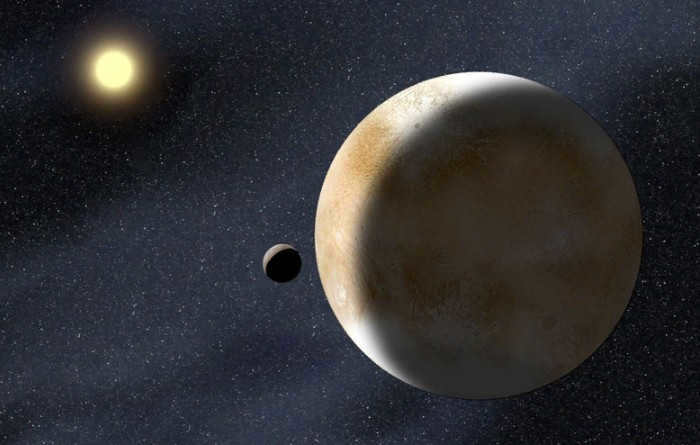
An artistic depiction of the view of the Sun as seen from the surface of Eris, which is recognized as the most remote dwarf planet within our solar system. Due to its considerable distance from the Sun, Eris experiences minimal heat from our star, causing the Sun to appear as a radiant star in the sky.
What is the count of dwarf planets in the solar system?
Excluding Pluto, the solar system has recognized Ceres, Haumea, Makemake, and Erida as dwarf planets. Previously, Ceres was classified as the largest asteroid with a diameter of approximately 950 kilometers. It is situated in the asteroid belt between Mars and Jupiter. Erida, on the other hand, surpasses even Pluto in size and is the largest among the dwarf planets.
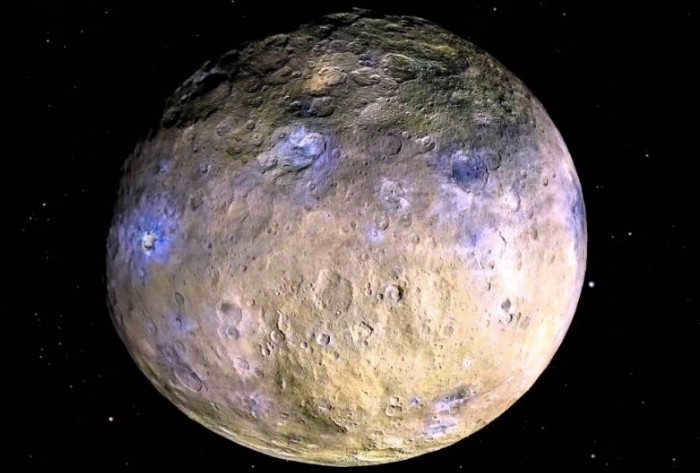
Ceres has been categorized as a dwarf planet since 2006. Prior to that, it was classified as one of the largest asteroids situated between the orbits of Mars and Jupiter
Are there any other dwarf planets?
Scientists are currently contemplating whether Charon, Pluto’s moon, should be added to the roster of dwarf planets. Charon does not actually orbit Pluto; rather, the two bodies share a common center of mass. Additionally, the transneptunian object Sedna and the main asteroids in the asteroid belt, Vesta, Pallada, and Hygeia, the fourth largest object, are also being considered as potential candidates.
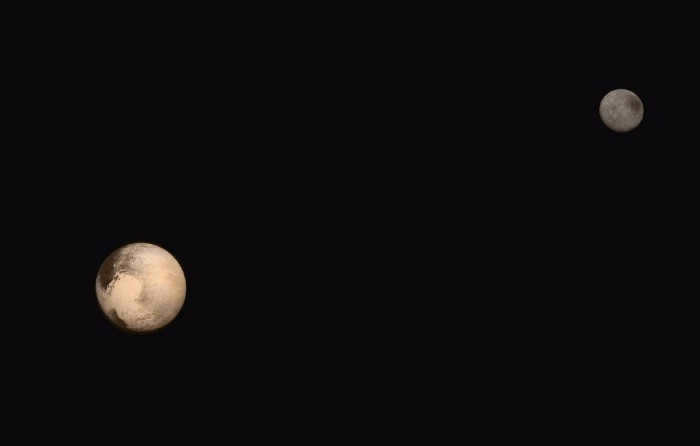
Charon, the companion of Pluto, and Pluto itself, are in orbit around a shared center of mass. It is possible that scientists will soon classify Charon as a dwarf planet.
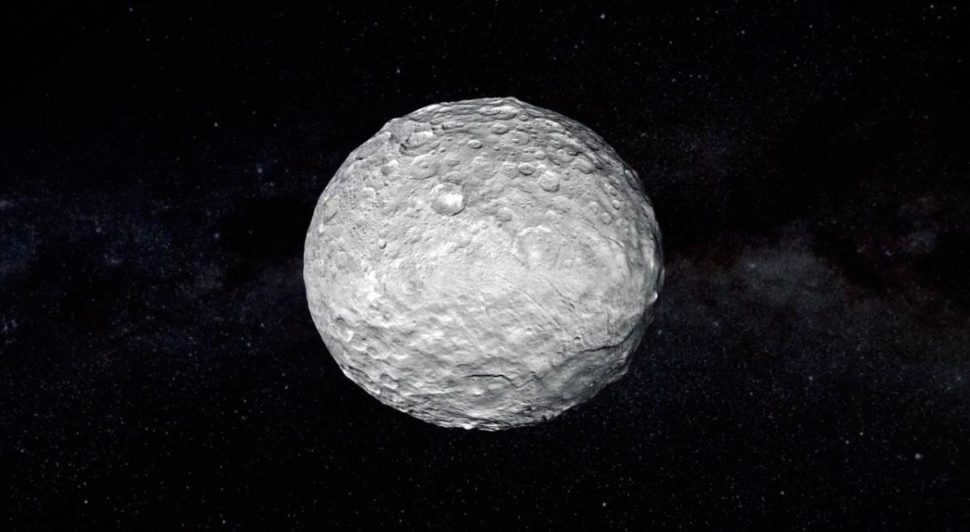
Back in 2006, the field of astronomy witnessed the emergence of a novel concept – the dwarf planet. This term holds significant value for scientists, but what exactly does it entail and why was it introduced?
The distinction between regular and dwarf planets
First, let’s grasp the concept of what constitutes a planet. Historically, planets were defined as celestial entities that traversed the sky, setting them apart from the fixed stars. In modern times, it was determined that all planets:
- ;
- follow orbits devoid of other substantial celestial bodies (excluding satellites of said planets).
The latter characteristic implies that two sizable bodies cannot occupy the same orbit. However, as time progressed, astronomers began discovering objects that resembled planets but inhabited close, nearly coincidental orbits. These were classified as dwarf planets. Thus, a dwarf planet is a sizable, sphere-shaped celestial entity that revolves around the Sun, sharing its orbit with numerous other celestial bodies that are comparable in size to the dwarf planet.
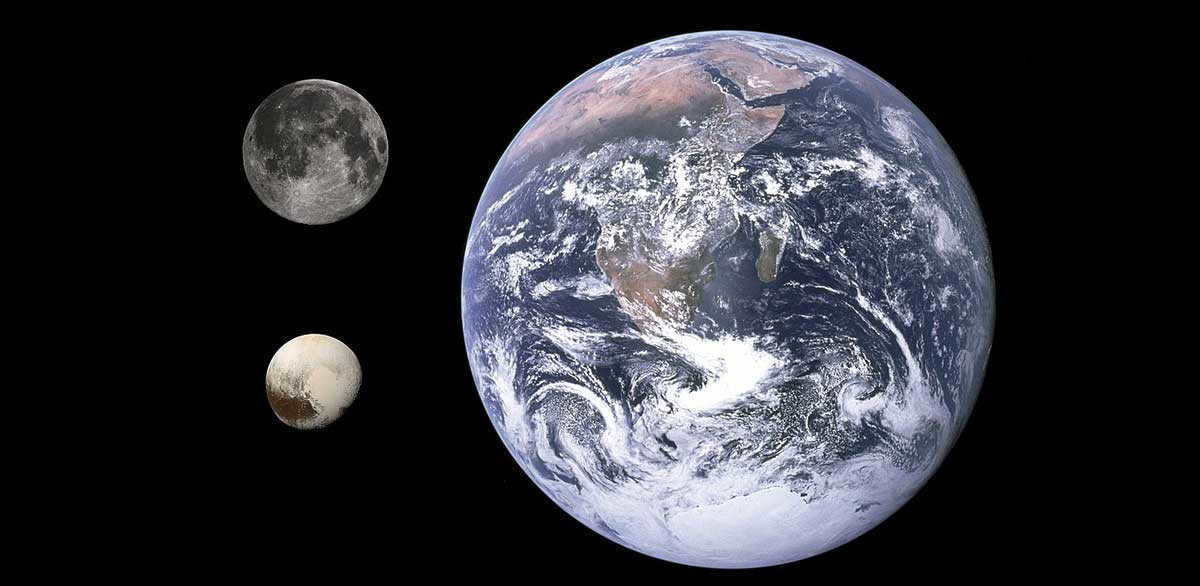
Origin of the term
Instances of dwarf planets
Simultaneously with Pluto, three other objects in the Kuiper Belt were acknowledged as dwarf planets:
Ceres, an entity in the main asteroid belt formerly classified as a large asteroid discovered in 1801, was also granted this designation.
As of 2020, astronomers have identified over 40 objects that could potentially be recognized as dwarf planets, although they have not yet been officially designated as such. In total, there might be up to 10 thousand dwarf planets in the solar system.
The solar system is comprised of celestial bodies of varying sizes. The most peculiar and enigmatic are dwarf planets. Scientists are intrigued by the study of these entities, endeavoring to uncover all of their secrets. To date, five bodies in this category have been thoroughly examined, which will be explored in this article.

The meaning of dwarf planets
In 2006, astronomers categorized all celestial bodies revolving around the Sun into three groups:
Dwarf planets are in an intermediate position. They do not have the large size or orbit of bodies like Mars or Jupiter, but they also cannot be classified as asteroids.
The International Astronomical Union has defined dwarf planets as spherical celestial bodies that orbit the Sun, but have a small mass and lack gravitational dominance. They also have smaller celestial objects in their orbit.
Dwarf planets’ size and mass
Among the objects in this range are five dwarf planets: Haumea, Makemake, Erida, Ceres, and Pluto (previously classified as a planet). However, scientists suggest that there are many more dwarf planets yet to be discovered. There is a group of potential candidates, which includes Sedna, for example.
According to MAC experts, a dwarf celestial body should have a diameter of at least 800 km and a mass exceeding 5⋅10 20 kg. The parameters of each object are listed in the table:
| No. n/a | Name of the dwarf planet | Dimensions (km) | Mass in kg | % of Earth mass |
| 1. | Ceres | 975,7909 | 9.5*10 20 | 0.0016 |
| 2. | Pluto | 2306,2326 | 1.305*10 22 | 0.22 |
| 3. | Haumea | 1960,1518,996 | 4.2*10 21 | 0.007 |
| 4. | Makemake | 1360×1480 km | 3*10 21 | 0.05 |
| 5. | Erida | 2326,2338 | 1.67*10 22 | 0.28 |
Formation of Dwarf Planets: An Explanation
The Kuiper belt is home to most of the dwarf planets in our solar system. These enigmatic celestial bodies owe their existence to the dynamic interplay of volatile substances such as ammonia, methane, and water, which undergo active movement and compression. Additionally, dwarf planets can also consist of a variety of rocks, further enhancing their composition.
However, beyond the confines of the Kuiper belt lies another potential source of material for the formation of dwarf planets: the Oort cloud. It is postulated that the compaction of elements within this distant region gives rise to dwarf planets, allowing them to take on a spherical shape and adopt certain characteristics reminiscent of their more mature counterparts.
Dwarf planets
Each dwarf planet in our solar system possesses unique characteristics. They are assigned numbers by the CMC (Center for Minor Planets), have specific locations, varying numbers of satellites, and other individual traits.
Pluto

Everyone is aware that prior to August 2006, there were not a total of eight primary planets within our solar system, but instead nine. One of these nine planets was Pluto, which was discovered by Clyde Tombaugh back in 1930. However, Pluto possessed distinct characteristics that set it apart from the other planets. By watching the following instructional video, you will gain an understanding of what is classified as a dwarf planet and become acquainted with a few examples of this celestial category.
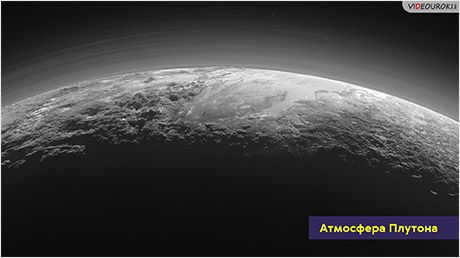
Currently, it is not possible to view or distribute the video tutorial to students
In order to gain access to this and other video tutorials included in the package, you will need to include it in your personal account.
Unlock amazing possibilities


Dwarf Planets Lesson Outline
You are all aware that prior to August 2006, the solar system had not just eight major planets, but nine. The ninth planet was Pluto, which was discovered by Clyde Tombaugh in 1930. However, Pluto possessed distinct characteristics that set it apart from the other planets. In 1978, it was found that Pluto had a satellite called Charon, which was only twice as small in diameter compared to Pluto.
Therefore, during the August 2006 meeting of the International Astronomical Union, it was decided to classify Pluto as a new type of object in the solar system – a dwarf planet.
As per the definition, a dwarf planet is a celestial body that:
– orbits the Sun;
– possesses enough mass to maintain a nearly spherical shape under the influence of gravitational forces, unlike the smaller bodies in the Solar System;
Unlike planets, dwarf planets cannot clear the region of their orbit from other objects, which is a significant distinction.
In 2017, the International Astronomical Union officially acknowledged 5 dwarf planets, including Ceres, which was previously considered the largest asteroid. The other four are Pluto, Erida, Makemake, and Haumea, all of which are transneptunian objects.
The smallest and closest to the Sun among the dwarf planets is Ceres, which resides in the main asteroid belt between the orbits of Mars and Jupiter.
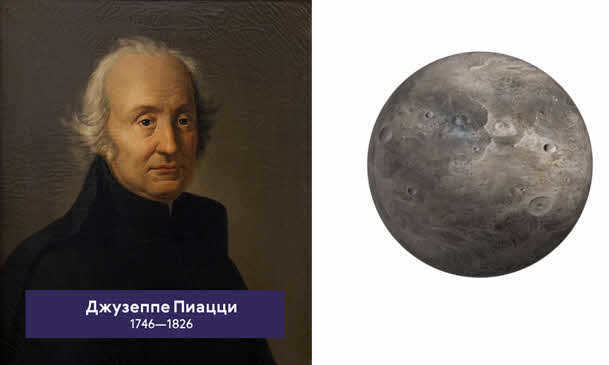
The Italian astronomer Giuseppe Piazzi discovered Ceres on January 1, 1801. In recognition of the ancient Roman goddess of fertility, the newly found planet was named Ceres.
Ceres is situated at a distance of 413.77 million kilometers from the Sun. It takes Ceres approximately 4.6 years to complete one orbit around the Sun. Furthermore, Ceres has an orbital period of 9 hours, 4 minutes, and 27.1 seconds.
At an average radius of 463.5 kilometers, Ceres stands out as the largest celestial body within the asteroid belt and even surpasses some of the major moons orbiting the gas giants. This dwarf planet boasts a weight of 9.393 ∙ 10 20 kilograms and maintains an average density of 2.161 g/cm 3 , indicating the possibility of a substantial mantle layer measuring up to a hundred kilometers in depth beneath its thin regolith coating. This mantle is believed to primarily consist of water ice, though the potential presence of liquid salt water cannot be completely ruled out. The amount of ice present on Ceres exceeds the Earth’s entire freshwater supply, making it a truly remarkable feature. Furthermore, Ceres harbors a rocky core located within its central region.

The Ahuna cryovolcano, reaching a height of about 4-4.5 kilometers, stands as the highest point on Ceres. This remarkable mountain is primarily composed of ice that originated from the planet’s interior during a series of frigid cryovolcanic eruptions. Unlike other celestial bodies, Ceres does not possess any natural satellites with a diameter exceeding 20 kilometers.
Another notable member of the dwarf planet family is Pluto. Clyde Tombaugh made the discovery of Pluto on February 18, 1930, marking a significant milestone in astronomical history.
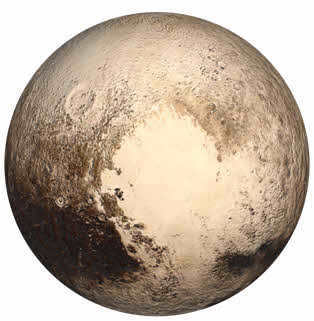
Interestingly, the name of Pluto was bestowed upon it by an eleven-year-old girl named Venetia Berni, who had a keen interest in astronomy and classical mythology. During breakfast, she learned about the planet’s discovery from her grandfather and suggested that the new planet, being distant and dark, should be named after the ancient Roman god of the underworld, Pluto. This suggestion was relayed to Prof. Herbert Turner, who telegraphed it to his colleagues in the United States. On May 1, 1930, the Lowell Observatory held a vote to decide on the name for the new planet. The options included Minerva (although there was already an asteroid named that) and Kronos (which was not popular due to being suggested by an astronomer with a questionable reputation). Ultimately, Pluto received all the votes from the observatory members and became the official name for the newly discovered planet.
Pluto has long been a source of fascination for astronomers due to its immense distance from the Sun, measuring 39.48 astronomical units (a. e.). It was previously known that Pluto completes an orbit around the Sun in approximately 247.92 Earth years. What sets Pluto apart from other planets like Venus and Uranus is its retrograde direction of rotation, taking 6.387 Earth days to complete a full revolution on its axis.
In January 2006, eight months prior to Pluto being reclassified as a dwarf planet, the “New Horizons” mission was launched from Cape Canaveral in the United States. The mission’s objective was to study the then-ninth planet. It took over 9 years for the spacecraft to cover a distance of nearly 4.7 billion kilometers.
During the period of closest approach, one of the most detailed photographs of Pluto was captured.
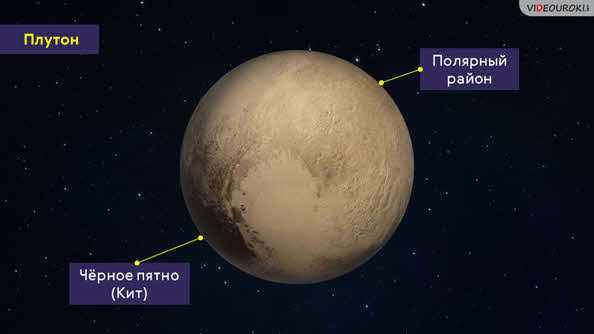
As can be observed, this picture is distinguished by the prevalence of three areas with varying levels of brightness. The most prominent feature is the dark spot located at the equator, which has been informally named “Whale”. Adjacent to the left of the Whale, there is a sizable bright region that resembles the shape of a heart, covering an approximate area of 2000 km2. (Although some individuals may perceive it as the head of the renowned dog character from Walt Disney’s animated films rather than a heart). Positioned just above the heart-shaped region is the polar area with a moderate level of brightness.
Additional photographs of the surface of Pluto have revealed its uniqueness compared to other celestial bodies within our solar system. Alongside the prevalent presence of large craters, pits, and valleys, there exists an unusually smooth expanse known as the Sputnik Plain, spanning over one thousand kilometers. Furthermore, cryovolcanoes have been observed ejecting a combination of ice, nitrogen, water, ammonia, and other substances.
Upon studying Pluto’s atmosphere, researchers have discovered that it is significantly colder than initially believed. In close proximity to the planet’s surface, temperatures can plummet to as low as -223 degrees Celsius. Additionally, the atmosphere is incredibly thin and consists primarily of gases that evaporate from Pluto’s surface.
The question of Pluto’s size has long been debated, but the New Horizons mission finally provided an answer. Based on revised data, it has been determined that Pluto has an average radius of 1187 kilometers, slightly larger than previously believed. In terms of mass, Pluto is only about 0.22% of Earth’s mass (1.3 ∙ 10 23 kg), making it significantly smaller than our own planet. In fact, Pluto’s mass is nearly six times less than that of the Moon. The average density of Pluto is also relatively low, not exceeding 1.86 g/cm 3 .
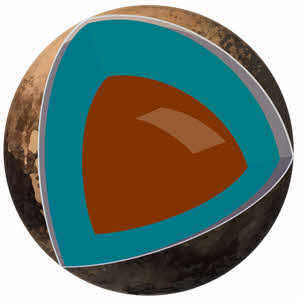
According to the data, it can be inferred that the composition of Pluto’s interior consists of approximately 50-70% rock and 50-30% water ice. The majority of the surface of this celestial body is covered with frozen nitrogen.
Pluto possesses a total of 5 natural satellites, all of which were discovered prior to the New Horizons flyby. The largest satellite, known as Charon, was first identified in 1978 by James Cristi. The name of the satellite was inspired by the Greek mythological figure Charon, who was responsible for ferrying the souls of the deceased across the River Styx. Charon’s diameter is slightly more than half that of Pluto, and their mass ratio is the most significant in the entire solar system, standing at 1/8.
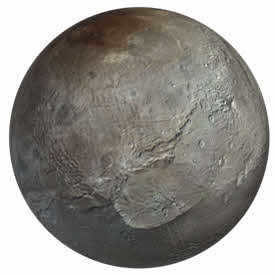
For a considerable period of time, scientists held the belief that Charon was a monotonous celestial body adorned with numerous craters on its outer layer. However, their perspective dramatically shifted when the New Horizons station transmitted the initial snapshots of this satellite, revealing an awe-inspiring gash that stretched over 1600 kilometers, dissecting the center of Charon. The surface of this moon appeared as if it had been sliced open.
Pluto and Charon orbit in synchronization, mirroring the relationship between Earth and its moon. Yet, an exceptional aspect of their orbital pattern exists: they perpetually face each other, always presenting the same side. In simpler terms, if one gazes upon Pluto from one vantage point, Charon will consistently remain visible, seemingly motionless across the firmament. However, from the opposite viewpoint, Charon remains perpetually hidden from sight.
The New Horizons spacecraft also successfully captured images of Pluto’s remaining four satellites.
Located at a distance of 42.98 AU from the Sun, Haumea stands as the fourth largest dwarf planet in our Solar System. It completes its orbit around the Sun in approximately 281.8 Earth years. Additionally, Haumea boasts a rapid rotation period of 3.92 Earth hours, making it the swiftest spinning celestial body among all the objects observed within our Solar System.
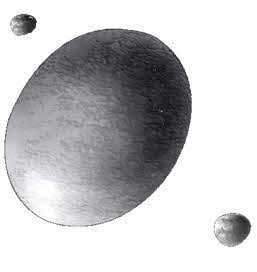
Having an approximate radius of 718 kilometers, this celestial body possesses a highly elongated structure, resembling that of a “torpedo” melon. Haumea’s estimated mass is around 4 ∙ 10 21 kilograms, with an average density of 2.6 g/cm 3 .
Furthermore, this dwarf planet has been discovered to possess two natural satellites, namely Hiiaka and Na'maka.
Situated even further away from the Sun (approximately 45.44 a. e.) lies Makemake, the third largest dwarf planet in our solar system.
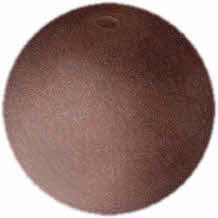
Makemake completes its orbit around the Sun in 306.28 Earth years. The precise dimensions and composition of the planet are not definitively known. However, it is believed that Makemake has an average radius of approximately 739 kilometers. The mass of the planet has also not been accurately determined, but it can be estimated to be about 0.05% of Earth’s mass (equivalent to 3 ∙ 10 21 kg = 0.0005 M⨁) assuming its average density is similar to that of Pluto. If there is an atmosphere, it is likely to be very thin and consist of nitrogen, ethane, and methane.
For a long time, it was thought that Makemake did not have any natural satellites. However, on April 26, 2016, the discovery of a very faint object orbiting the planet was announced.
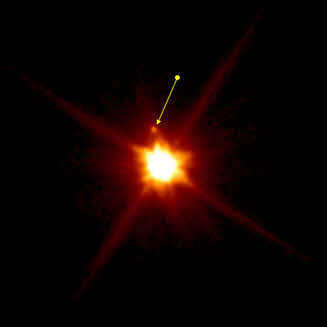
Erida, the newest member of the dwarf planet family, is situated 67.781 astronomical units away from the Sun. It holds the title of the second largest dwarf planet, trailing only behind Pluto, and is also the most massive one in our solar system.
On November 6, 2010, scientists had the opportunity to witness Erida passing in front of a faint star. This rare occurrence provided them with the means to calculate its diameter, which was determined to be no more than 2326 kilometers.
